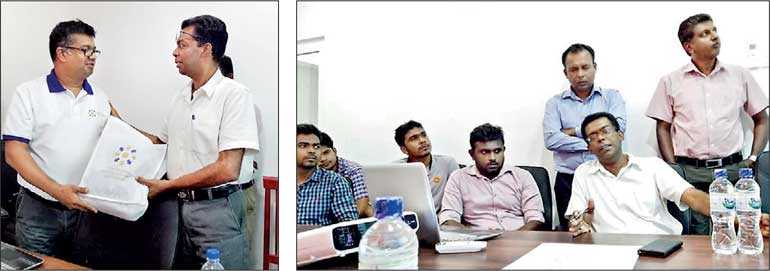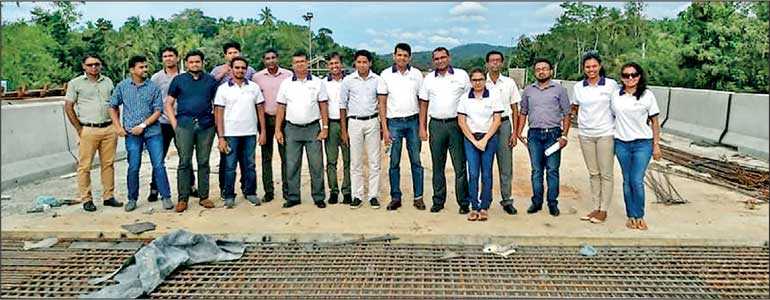Monday Jan 27, 2025
Monday Jan 27, 2025
Monday, 30 December 2019 01:26 - - {{hitsCtrl.values.hits}}



In fulfilling its vision “to be the most prominent professional body in the central region facilitating regional development in logistics and transportation”, a group of 15 members of CILT Sri Lanka – Central Branch visited the Central Expressway Project (CEP) Section II project site on 28 November to witness its progress.
The Government of Sri Lanka has taken a decision to construct the expressway starting from the Kadawatha Interchange of the Outer Circular Highway to Dambulla and Galagedara, with the key objective of facilitating better transportation to Central, North Central, North Western, Northern and Eastern Provinces, overcoming traffic congestion on A1 an A6 roads where average vehicle speeds have significantly slowed in recent times. The project is expected to drive industrial development in the region by reducing travel times and providing enhanced access to port of Colombo and Bandaranayake International Airport at Katunayake boosting import and export trade. The improved travel times from these provinces to Colombo would bring about savings in terms of time spent on the road, fuel savings by avoiding congestion leading to overall productivity gains for the country.
The construction of the CEP has been divided into four sections; Section I from Kadawatha to Meerigama (37.1 km), Section 2 from Meerigama to Kurunegala (39.7km); Section 3 from Pothuhera to Galagedara (32.5km) and Section 4 from Kurunegala to Dambulla (60.3km). All the construction work in Section 2, which the team visited, is being carried out by local construction companies, and all the design work done by local experts, a proud achievement for Sri Lankan professionals. In addition, the financing for Section 2 is also done by local banks without any foreign aid. The construction of Section 2 is expected to be completed by mid-2020.
This visit was organised to fulfil one of the main objectives of the Central Branch of CILT Sri Lanka – to facilitate a vibrant dialogue on regional transport and logistics issues in order to advocate well-planned solutions for the region. The members got a platform to discuss and truly experience the ongoing project and its significance to the general public. The visit comprised a technical presentation followed by visits to construction sites including via ducts, culverts, interchanges and pre-cast concrete sites.
The visit was the first activity planned by the Central Branch, the first regional branch of CILT Sri Lanka. The Central Branch wishes to thank the project staff of RDA managing Phase II of the CEP and facilitating the visit.